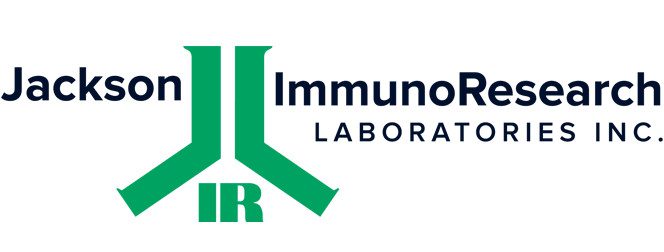Single B cell screening rapidly identifies potent neutralizing antibodies for SARS-CoV-2
University of Michigan researchers used Jackson ImmunoResearch antibodies for affinity and specificity analysis
Although mRNA vaccines have been hugely successful in protecting against SARS-CoV-2 infection, COVID-19 remains a major threat to human health. For this reason, efforts focused on developing additional vaccines, therapeutics, and diagnostics continue apace as the global scientific community strives to tackle the pandemic. Monoclonal antibodies have a critical role in combating COVID-19 and have already proven effective at reducing disease progression in patients with mild-to-moderate symptoms. However, future advances within this field hinge on technologies for accelerating antibody discovery and development timelines. A recent Nature publication demonstrates the utility of single B cell clone screening for rapidly and reliably identifying high‑affinity, potent, SARS-CoV-2 neutralizing antibodies and explains how neutralizing activity can be enhanced through engineering.
Single B cell screening accelerates antibody discovery
Historically, therapeutic antibody discovery and development timelines have ranged from years to decades. Yet, isolating high-affinity antibodies against a desired target antigen is now possible in just a matter of weeks with the development of single B cell screening. This pioneering methodology involves isolating viable cells from immunized animals or convalescent patients, sorting antigen-specific cellular subpopulations, and recovering paired VH/VL antibody genes via RT-PCR and PCR; the encoded antibodies can then be expressed and characterized to determine the best-performing clones. Advantages of this approach are that it uses native antibody sequences that have undergone somatic hypermutation and retains native VH/VL pairings. Additionally, the discovery process is high-throughput, allowing for deep assessment of the hyperimmune antibody repertoire.
Utility for targeting SARS-CoV-2
To evaluate the utility of single B cell screening for isolating potent neutralizing antibodies against SARS-CoV-2, researchers at the University of Michigan produced a recombinant form of the SARS-CoV-2 receptor-binding domain (RBD) in HEK293T cells before purifying it and mixing it with alum, an adjuvant known to elicit a strong humoral response. Following immunization of BALB/c mice, anti‑RBD IgG1+ memory B cells were isolated from spleen material via single-cell sorting and processed for recovery of VH/VL genes. The resultant VH/VL gene pairs were then cloned into mammalian expression plasmids (containing human IgG1 constant regions and kappa light chain regions for chimeric antibody expression) and transiently transfected into HEK 293-6E cells. Antibody characterization involved purification with Protein A beads and evaluation for properties including antigen binding and neutralizing activity.
Affinity analysis
Affinity analysis was performed by incubating varying concentrations of each antibody with streptavidin Dynabeads™ coated with biotinylated RBD. After washing to remove any unbound antibody, the beads were incubated with Alexa Fluor® 647 AffiniPure Goat Anti-Human IgG, Fcγ fragment specific antibody (Jackson ImmunoResearch, 109-605-098) and evaluated by flow cytometry. This revealed two clones (12H2 and 13I1) that possessed low pM EC50 values against RBD, values comparable to a previously reported potent neutralizing antibody, CB6.
Specificity analysis
One approach used for analyzing antibody specificity employed Dynabeads™ coated with His-tagged RBD of either SARS-CoV or SARS-CoV-2 origin. Following incubation of each bead type with varying antibody concentrations, the beads were washed and incubated with Alexa Fluor® 488 AffiniPure Goat Anti-Human IgG, Fcγ fragment specific antibody (Jackson ImmunoResearch, 109-545-008) before being evaluated by flow cytometry. Both 12H2 and 13I1 showed high affinity for SARS-CoV-2 but lacked affinity for SARS-CoV, indicating recognition of an unconserved epitope.
In parallel, beads coated with clone 13I1 were assessed for binding to the wild-type SARS-CoV-2 S1 protein as well as to the S1 protein of two variants of concern (B.1.1.7 and B.1.351). This involved incubating the beads with the SARS-CoV-2 S1 proteins, followed by addition of a chicken anti-His antibody and flow cytometry-based detection using Alexa Fluor® 647 AffiniPure F(ab’)₂ Fragment Donkey Anti-Chicken IgY (Jackson ImmunoResearch, 703-606-155). Data showed that while 13I1 retained binding to B.1.1.7, binding to B.1.351 was largely abrogated, suggesting a mechanism through which B.1.351 may escape engagement by SARS-CoV-2 antibodies.
Neutralizing activity
Neutralizing activity was assessed by co-incubating each antibody with pseudovirus particles displaying the SARS-CoV-2 spike protein and containing RNA encoding for expression of luciferase. A serial dilution of each mixture was then applied to engineered HEK293T cells stably expressing human ACE2 (the cell receptor through which SARS-CoV-2 invades the host cell) and pseudovirus infectivity was quantified by measuring relative luciferase expression 48 hours post-infection. Antibodies 12H2 and 13I1 were both shown to possess potent sub-nM neutralizing activity, with IC50 values of 0.109 and 0.162 nM, respectively; these were comparable to the IC50 of CB6 (0.087 nM).
Improving neutralizing activity through engineering
To investigate the impact of valency on neutralizing activity, the University of Michigan researchers engineered a tetravalent dual-variable domain (DVD) version of the 13I1 antibody and performed a side-by-side comparison with the bivalent 13I1 IgG using the SARS-CoV-2 pseudovirus assay. DVD showed enhanced neutralizing activity relative to the bivalent 13I1 antibody (IC50 values of 0.131 nM and 0.324 nM, respectively), highlighting the potential of increasing valency as a therapeutic strategy.
Conclusion
B cell screening has proven utility to rapidly identify high‑affinity, potent, SARS-CoV-2 neutralizing antibodies. Moreover, its use in combination with antibody refinement promises to be an effective strategy in protecting against COVID-19.
Featured products:
- Alexa Fluor® 647 AffiniPure Goat Anti-Human IgG, Fcγ fragment specific 109-605-098
- Alexa Fluor® 488 AffiniPure Goat Anti-Human IgG, Fcγ fragment specific 109-545-008
- Alexa Fluor® 647 AffiniPure F(ab’)₂ Fragment Donkey Anti-Chicken IgY (IgG) (H+L) 703-606-155
Article reference:
Schardt JS, Pornnoppadol G, Desai AA, et al. Discovery and characterization of high-affinity, potent SARS-CoV-2 neutralizing antibodies via single B cell screening. Sci Rep. 2021;11(1):20738. Published 2021 Oct 20. doi:10.1038/s41598-021-99401-x
